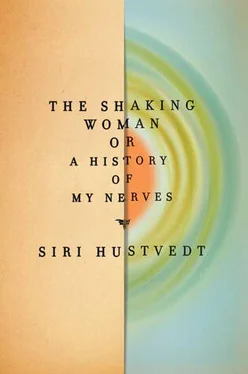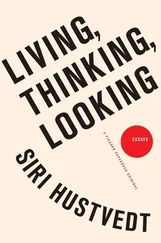The man was diagnosed with “a conversion reaction as a result of post traumatic stress disorder, PTSD.” 75The diagnosis is puzzling. Here the man’s hysterical symptoms are subsumed by PTSD, even though he manifested only conversion. Why? It might be that once he was in the psychiatric unit, his doctors unearthed other symptoms (although there is no mention of them, only of his steady recovery) or simply that his war record suggested that diagnosis to the doctors. The DSM does not mention conversion as part of PTSD, despite the abundant literature that connects it to trauma. The authors state, “If the symptom meets criteria for another mental disorder (e.g., Brief Psychotic Disorder, Conversion Disorder, Major Depressive Disorder), these diagnoses should be given instead of, or in addition to, Posttraumatic Stress Disorder.” 76Would a woman like Justine Etchevery, who had suffered a sexual attack, severe burns, and two near-fatal illnesses, have been diagnosed today with conversion as a result of PTSD? Was the Israeli officer’s diagnosis essentially associative, an added-on relative: battle-scarred veteran equals PTSD? Does PTSD’s powerful connection to warfare give it a dignity that conversion couldn’t possibly have because it has always been and still is linked to women?
During the Vietnam War, PTSD became the abbreviation of choice to encapsulate the many traumatic symptoms that remained with soldiers after the war. Every war seems to call for its own name. Soldier’s heart, shell shock, battle fatigue, war neurosis, and Kriegsnervose are all variants on the theme of psychic trauma due to the horror of battle. Obviously, memory plays an important role in the lives of soldiers who suffer from conversions. Unbearable memories. Unwanted memories. Unwanted realities. Repression. Unconscious memories and ideas.
HOW FAR HAS SCIENCE come in understanding what is going on with people who have psychogenic symptoms — symptoms of many kinds that don’t fit into ordinary neurological diagnoses? In their 2006 paper “Conversion Disorder and fMRI” published in Neurology, Trevor H. Hurwitz and James W. Pritchard review a recent brain-scan study of hysterics. At the end of their discussion, the authors reach 130 years into the past, to the English physician J. Russell Reynolds, “who described paralysis and other disorders of motion and sensation based on an ‘idea which should take possession of the mind and lead to its own fulfillment.’ ” They go on to “reformulate” that statement in contemporary terms: “conversion reactions are fixed beliefs of somatic dys-function arising from psychological distress that control cortical and subcortical pathways to produce patterns of loss or gain of function that are not organic in the conventional sense.” 77Jean-Martin Charcot was present when Reynolds gave the paper cited by Hurwitz and Pritchard, at an 1869 conference of the British Medical Association in England, and the English physician’s words had a powerful influence on the French neurologist, which he himself credited often and went on to develop. 78“Fixed beliefs” sounds very much like Janet’s “fixed idea, idée fixe .” Charcot, Janet, and Freud also knew that hysteria wasn’t organic in the conventional sense. As far as I can tell from the many studies and papers I have tracked down, scientific ideas about hysteria have not advanced a single inch since the work done by these doctors in the late nineteenth and early twentieth centuries. Two authors of another paper on conversion and neuroimaging put it this way: “However, the question of how special psychological processes transmute into neurobiology has yet to be answered.” 79Wasn’t this Freud’s question, precisely, the one he hoped to answer in his Project in 1895?
There is general agreement that “psychological stressors” play a role in the symptoms of psychogenic illnesses, and now brain scans show clear evidence of neural changes in likely brain areas, but any broader explanation is lacking. What does it mean when Hurwitz and Prichard say “not organic in the conventional sense”? This seems true, but fuzzy. Organic has been used to designate illnesses that have a known cause, where seizure activity can be seen and measured, for example, or blindness can be attributed to a brain lesion, but not for those that can’t. The advent of visible signs of conversion in people’s brains seems to have left many researchers in a theoretical vacuum. What they’re left with is something organic in the unconventional sense.
The mind/body problem is still so vexing, so entrenched as a duality that it becomes almost impossible to think without it. This split, after all, created the distinction between psychiatry and neurology: sick minds versus sick brains. Hysteria, once within the providence of neurology, was pushed into psychiatry. Nevertheless, by all accounts, most conversion patients first present themselves to neurologists because they appear to have neurological problems. The issue here is again one of perception and its frames, disciplinary windows that narrow the view. Without categories, we can’t make sense of anything. Science has to control and restrict its windows or it will discover nothing. At the same time, it needs guiding thoughts and interpretation or its findings will be meaningless. But when researchers are trapped in preordained frames that allow little air in or out, imaginative science is smothered. Conversion studies are often small because it isn’t easy to round up people with the same symptoms, and if described at all, the cases are usually tossed off in a couple of lines, as seen with another patient of the seven who participated in the Brain study:
Patient V.A.
Fifty-one-year-old, right-handed woman, divorced, whose son died from heart disease a year prior to the study. Heaviness, weakness, and loss of dexterity of right limbs after her new companion suffered myocardial infarction while wrongly suspected of abusing a teenager. No sensory complaints. 80
Poor V.A. Imagine the grief of losing a child to heart problems and then falling in love with a man who has a heart attack after being falsely accused of what appears to be the violence against or sexual molestation of some young person. She suffered too many blows involving hearts: her heart and the hearts of beloved others. The heart is the metaphorical location of love, after all. She fell ill with a broken heart. The word “while” suggests some ongoing investigation the couple had to endure, a lowering black cloud they woke up to every morning and went to bed with every night. Most cases of hysteria don’t present themselves as madness. Like many psychiatric patients, these people have been subjected to repeated “stressors,” but they don’t have psychotic breaks and go howling into the streets. They are not immobilized by depression. Their symptoms are a metaphorical expression for what they can’t say: It’s too much. I can’t bear up. If I really pour out my grief and sadness, I’ll fall apart. I have often thought about the sentences written by D. W. Winnicott, an English psychoanalyst and pediatrician: “Flight to sanity is not health. Health is tolerant of ill health; in fact, health gains much from being in touch with ill health with all its aspects.” 81I understand him to mean that health can tolerate some disintegration. At one time or another all of us go to pieces, and it isn’t necessarily a bad thing. That state of disunity may allow a flexible and open creativity that is part of being healthy.
One finding in this study that included V.A. and V.U., the Algerian woman who fled her country after members of her family were murdered, interested me very much. The authors write, “Remarkably, the same premotor circuits [the neural networks shown to be affected in the seven conversion patients] are also involved in unilateral motor neglect after organic neurological damage, where voluntary limb use may fail despite a lack of true paralysis and intact primary sensorimotor pathways.” 82After injury to the right parietal lobe, some patients suffer from neglect . They stop noticing the left side of space, including the left side of their own bodies. For example, a person with this problem will comb only the hair on the right side of her head, eat only from the right side of her plate, and if asked to draw a flower will draw only half of it — the right half. The left side has ceased to exist. Hemiakinesia is the motor form of neglect. A patient will fail to use her left arm and leg even though they should be, from a neurological point of view, capable of working. One such patient would sometimes hop on her right leg when she walked, but other times, she was able to use both. 83Neglect is usually understood as a problem of attention, which is regarded as crucial to perception. One side of the world vanishes. Neglect patients sometimes deny that they have a paralyzed left arm, for example, and when it is shown to them will say that it belongs to another person, the physician or somebody else in the room, rather than claim it as their own. It has become an alien limb. The authors are drawing a connection between hysterical symptoms and hemiakinesia because they appear to involve the same premotor areas of the brain. The idea that organic and nonorganic illnesses (in the conventional sense) could mirror each other neurobiologically strikes them as remarkable.
Читать дальше












